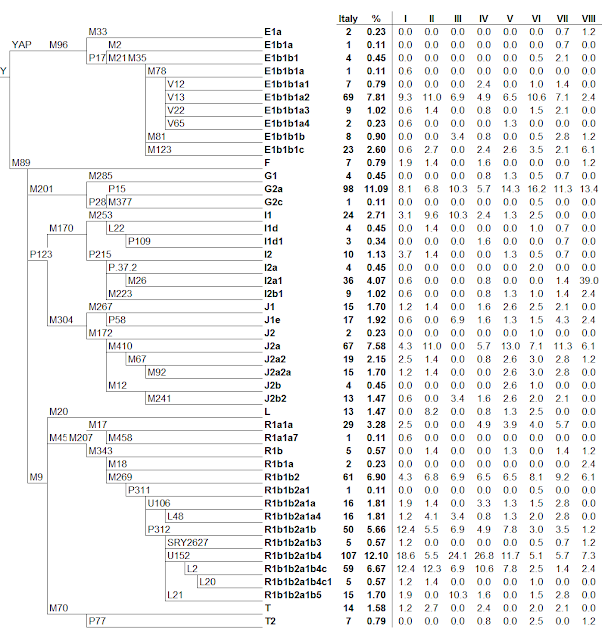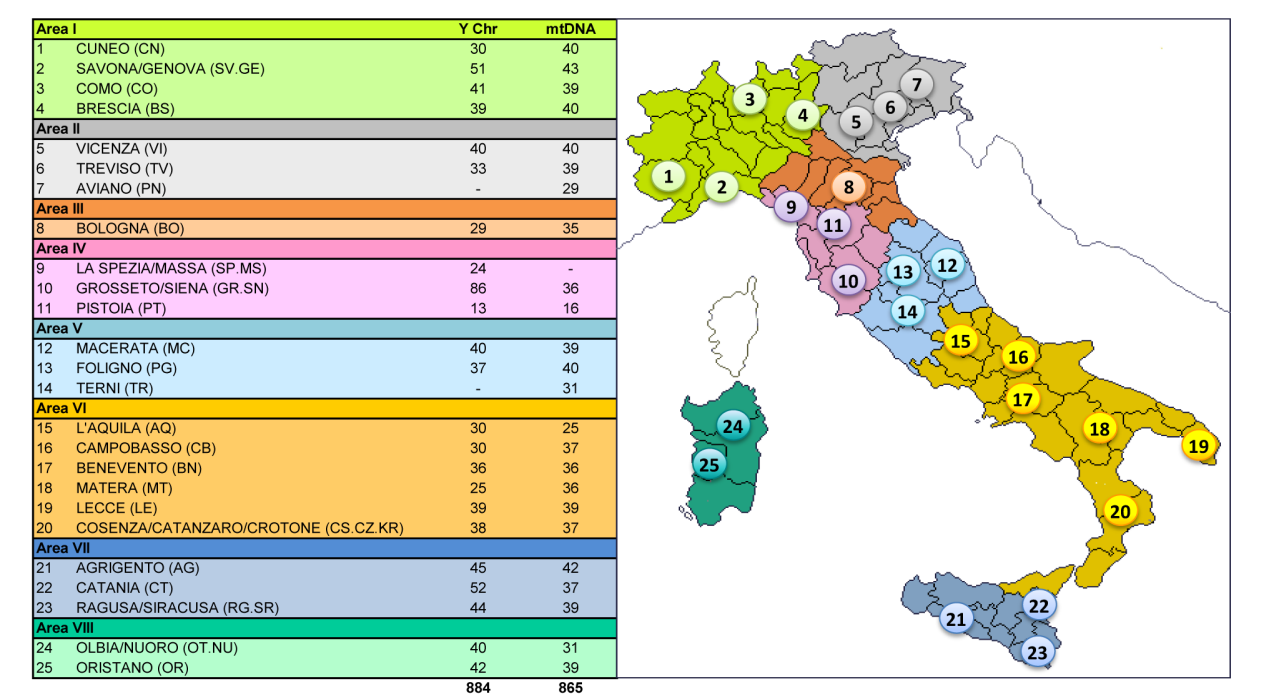After E-V13 it was only natural that I should follow with the map of J2b, the other major South Balkanic lineage with Neolithic ties.
The distribution is actually quite similar to E-V13, apart from a lower incidence in Slavic countries, but that may just be because E-V13 is found at a ratio of 4:1 against J2b almost everywhere. So wherever E-V13 is between 1% and 4% it would lie in the grey zone ( <1%) for J2b.
There is hardly any data for J2b in Iberia and France, so the actual distribution may be less homogeneous.

Compare with E-V13

Interestingly J2b appears to be absent from most of northern Italy, although that is not the case for E-V13. The opposite is true for the Basques, who have J2b but hardly any E-V13.
Note that Kurdistan has high frequency of J2b, E-V13 as well as I2a-Din, R1a and R1b-L23 in (the whole South Balkanic package).
Also noteworthy is the presence of both J2b and E-M123 in southern England (possible Roman heritage ?)
The distribution is actually quite similar to E-V13, apart from a lower incidence in Slavic countries, but that may just be because E-V13 is found at a ratio of 4:1 against J2b almost everywhere. So wherever E-V13 is between 1% and 4% it would lie in the grey zone ( <1%) for J2b.
There is hardly any data for J2b in Iberia and France, so the actual distribution may be less homogeneous.

Compare with E-V13

Interestingly J2b appears to be absent from most of northern Italy, although that is not the case for E-V13. The opposite is true for the Basques, who have J2b but hardly any E-V13.
Note that Kurdistan has high frequency of J2b, E-V13 as well as I2a-Din, R1a and R1b-L23 in (the whole South Balkanic package).
Also noteworthy is the presence of both J2b and E-M123 in southern England (possible Roman heritage ?)



